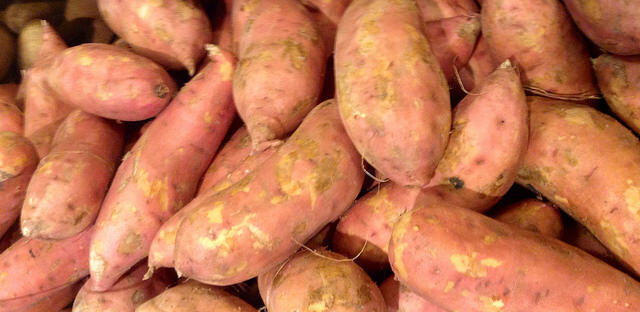Difference between sweet potatoes and yams
Sweet potatoes? Or yams?
Once and for all, which is which? Well, a strange thing happened in grocery stores over the past 50 years. For some unknown reason, farmers, wholesalers, and grocers started calling some types of sweet potatoes “yams.” Many varieties of sweet potatoes were misnamed yams, and the labels stuck.
Genuine yams are scarce in the U.S.
True yams are mostly grown and eaten in Africa, South America, and Central America. They’re imported into the U.S. in small numbers. Yams are rough and scaly and usually white on the inside (though there are purple varieties). Most of us haven’t eaten a single yam in our lives.
All the common orange “yams” in the stores are actually sweet potatoes. There are hundreds of sweet potato varieties, including white and purple kinds. (See this video about the anti-inflammatory effects of purple sweet potatoes.)
At my local store, the best looking sweet potatoes are usually Garnets and Jewels. You may have other great varieties in your area. Evidently there are thousands of different varieties of sweet potatoes in the world, so you should be able to find at least a few that you can love.
Sweet potatoes are nutritional powerhouses
You get a lot of nutritional benefits from sweet potatoes. With only 100 calories, a small-to-medium sweet potato gives you almost 4 grams of dietary fiber (about one-sixth of our daily requirement) and more than double the recommended amount of Vitamin A. It also delivers good doses of Vitamin C and manganese and several helpful micronutrients.
Sweet potatoes get their orange color from beta carotene, an antioxidant that our bodies convert into Vitamin A. Vitamin A helps maintain our immune systems and protect tissues in our eyes.
My favorite sweet potato recipes
No-Oil Roasted Sweet Potatoes in Bowls
Sweet Potato Cakes
Baked Sweet Potatoes with Easy, Tasty Toppings

